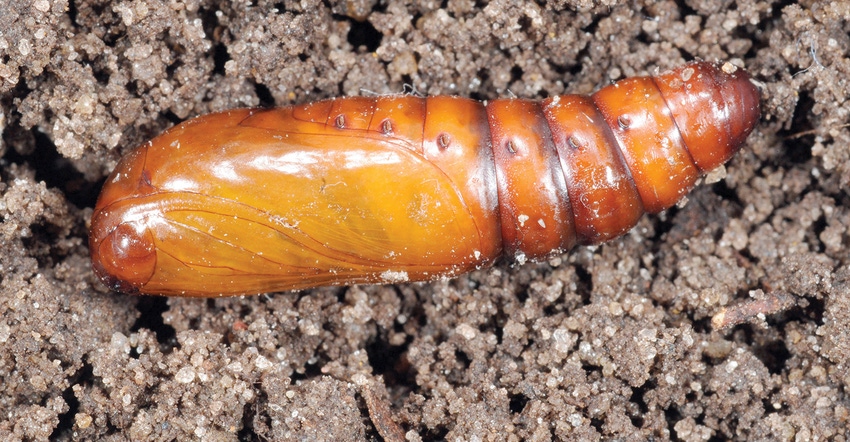March 19, 2018

Mississippi temperatures got into the single digits this winter, which many people think of as bug-killing weather, but experts say that is not always the case.
Mike Brown, state climatologist and Mississippi State University professor of geosciences, said the state saw a low of -1 degree at Independence in Tate County on Jan. 18. Overall, the state averaged temperatures about 4 degrees lower than normal in January.
“For this past January, parts of the state had three consecutive days below freezing, which is not typical,” Brown said. “There were a number of periods in the mid- to late 1980s where areas in the northern part of the state remained below freezing for up to five days.”
Brown said it is not uncommon for Mississippi to experience short periods of very low temperatures.
“If we look at the totality of the climate records dating back to the late 1880s, for most locations, this would have been somewhere around the 10th or 15th coldest January,” he said.
Blake Layton, entomologist with the MSU Extension Service, said many people are hoping these temperatures will drastically reduce the populations of summer insects.
“Unfortunately, cold winter temperatures don’t affect insect numbers as much as we might wish,” Layton said. “Most of our native species are also in more northern regions of the country and are very well adapted to surviving cold winters.”
Native insects cope with the cold in a variety of ways, mostly involving spending the winter in an immature life stage, whether egg, larva or pupa. Adults often seek out protected habitats for overwintering.
“Many insects burrow into the soil to pupate, while others seek out protected sites such as leaf litter, hollow trees or under bark,” Layton said. “Also, many insects are able to survive exposure to freezing temperatures and have ‘antifreeze’ in their blood that prevents them from suffering cold injury.”
In terms of insect mortality, the number of consecutive, extremely cold days matters even more than the actual thermometer readings.
“Here in Mississippi, we rarely have more than a few days in a row with subfreezing temperatures, and it is even more rare to have consecutive days when the high temperatures do not exceed 32 degrees,” Layton said. “Many insects overwinter in some type of sheltered, insulating situation, which allows them to survive short periods of very cold ambient temperatures.”
This year, sustained cold over consecutive days allowed the soil to freeze as much as 2 inches deep in places. But this level of cold is not likely to have much noticeable impact on summer populations of most native pest species.
Nonnatives struggle
While native insects can handle typical winters, nonnative or introduced pests often struggle.
“Impacts of severe winters on nonnative species depends on where a particular species originates from,” Layton said. “If it comes from a cold climate, it will be largely unaffected by our winters, but pests that come from tropical and subtropical climates can be greatly impacted.”
Layton said insects that will be affected by the 201718 winter include Argentine ants and Southern green stinkbugs.
Fall armyworms were eliminated by the cold, but even milder winters kill them. Fall armyworm moths will return to the state this year from more southern regions, just as they do every year.
Redbanded stinkbugs, a nonnative subtropical species that has been a significant pest in row crops during the past couple of years, should be largely eliminated for the year.
Some insects will suffer few or no effects of Mississippi’s cold winter: honeybees, Eastern subterranean termites, Southern house mosquitoes, imported fire ants, tomato fruitworms or corn earworms, and green and brown marmorated stinkbugs.
Layton provides a weekly newsletter during the growing season that offers information on current insect issues. Subscribe to “Bug’s Eye View” at https://extension.msstate.edu/newsletters/bugs-eye-view.
About the Author(s)
You May Also Like






